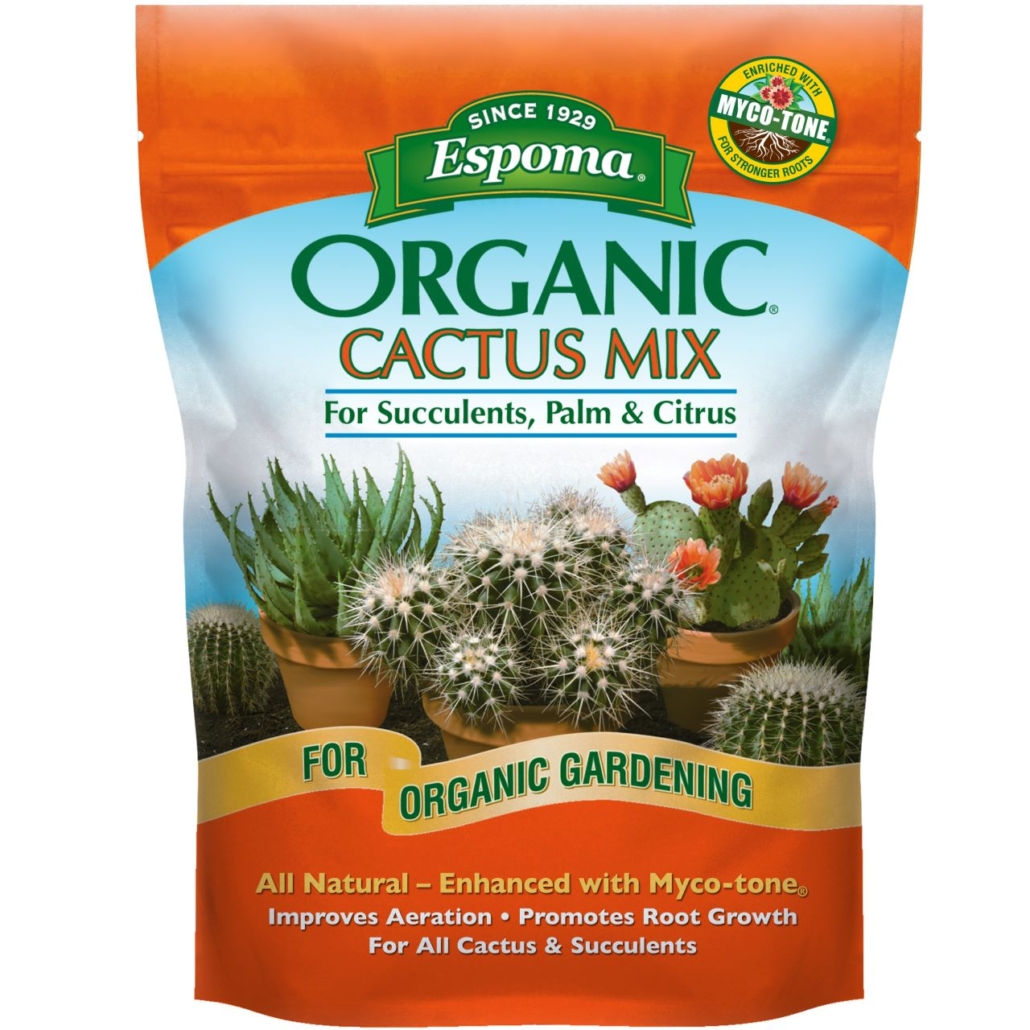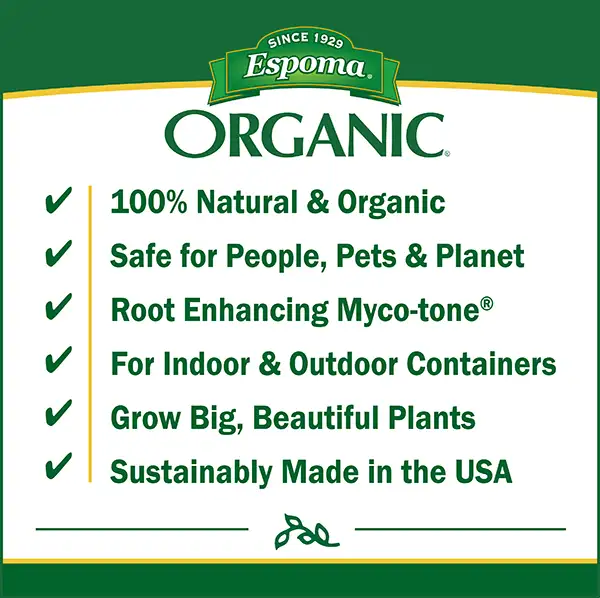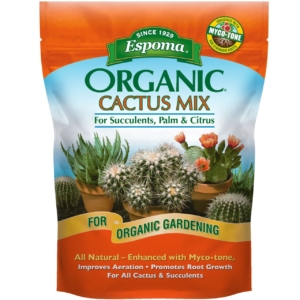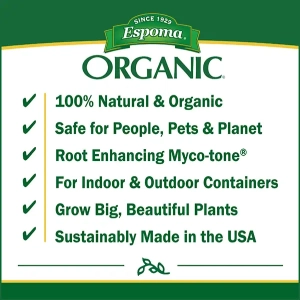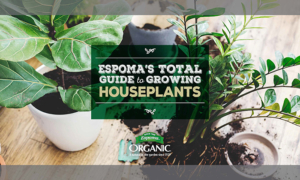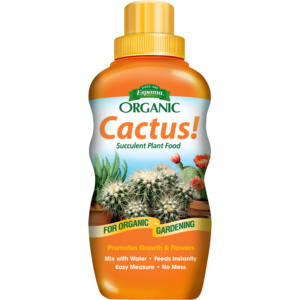Cactus Mix
Espoma Organic Cactus Mix is the ultimate potting soil for all your cactus & succulents! It contains a rich blend of the finest natural ingredients and is enhanced with yucca extract and Myco-tone, our proprietary blend of mycorrhizae, to ensure your plants grow deeper roots and more beautiful blooms.
- For All Cactus & Succulents
- Grow Bigger, More Beautiful Plants
- Contains Root Enhancing Myco-tone®
- 100% Natural & Organic Approved
- Safe for People, Pets, and Planet
Total Guide to Growing Houseplants.Everything you need to know to grow happy, healthy, perfect houseplants.
Click here to view our Houseplant e-Book
For use on:
For Cactus, Succulent, Palm and Citrus container plants.
When to use:
Any time planting containers.
How much to use:
- Select a container that is larger than your plants current pot, and has a drainage hole at the bottom with the tray beneath it to catch excess water.
- Fill container to 1/3 full with Cactus Potting Soil Mix.
- Carefully remove the plant from its current container and gently loosen the root ball.
- Center the plant in the new container and fill it with additional Cactus Mix.
- Allow at least 1 inch between the rim of the pot in the top of the soil.
- Gently pat down the next and add more if required.
- Make sure the plant is about the same depth in the soil as it was in the original container.
- Wait 1 or 2 weeks, then water thoroughly with a slow gentle spray and allow to drain.
Growing Tips:
Re-potting: Cactus, succulents, palm, and citrus should be re-potted annually into the next larger size pot. Best time to do this is early spring. After re-potting, place into a shaded area for one or two weeks.
Watering: Always water thoroughly so that water flows from the container’s drainage holes. Soil should be allowed to dry between waterings. Never leave water standing in saucer. Water can be greatly reduced for most plants during the winter months.
Light: Cactus and most succulents grow in semi-desert, and therefore need the best light you can provide. The only exception to this is the first week or two after re-potting (place in shaded area).
Feeding: Feed with Espoma Organic Cactus!, a natural liquid plant food beginning one month after planting. Follow label directions.
How to apply:
- Select a container that is larger than your plants current pot, and has a drainage hole at the bottom with the tray beneath it to catch excess water.
- Fill container to 1/3 full with Cactus Potting Soil Mix.
- Carefully remove the plant from its current container and gently loosen the root ball.
- Center the plant in the new container and fill it with additional Cactus Mix.
- Allow at least 1 inch between the rim of the pot in the top of the soil.
- Gently pat down the next and add more if required.
- Make sure the plant is about the same depth in the soil as it was in the original container.
- Wait 1 or 2 weeks, then water thoroughly with a slow gentle spray and allow to drain.
Growing Tips:
Re-potting: Cactus, succulents, palm, and citrus should be re-potted annually into the next larger size pot. Best time to do this is early spring. After re-potting, place into a shaded area for one or two weeks.
Watering: Always water thoroughly so that water flows from the container’s drainage holes. Soil should be allowed to dry between waterings. Never leave water standing in saucer. Water can be greatly reduced for most plants during the winter months.
Light: Cactus and most succulents grow in semi-desert, and therefore need the best light you can provide. The only exception to this is the first week or two after re-potting (place in shaded area).
Feeding: Feed with Espoma Organic Cactus!, a natural liquid plant food beginning one month after planting. Follow label directions.
Available in 4 & 8 qt. bags
Ingredients:
This product contains 60-70% processed forest products, sphagnum peat moss, perlite, humus, limestone to adjust pH, and yucca extract.
Active Ingredients:
Ectomycorrhizal Fungi: A total of 1.22 8 propagules / cc (3.4 million propagules per cubic foot) of the following 3 species:
Pisiolithus tinctorius 105.66
Rhizopogon luteolus 8.57
Rhizopogon roseolus 8.57
Endomycorrhizal Fungi: A total of 0.072 propagules / cc (2,040 propagules per cubic foot) of the following 4 species
Rhizophagus irregularis 0.018
Septoglomus deserticola 0.018
Claroideoglomus etunicatum 0.018
Funneliformis mosseae 0.018
Videos
Related Blog Posts
VIDEO: Euphorbia Repotting 🌵 with Summer Rayne Oakes
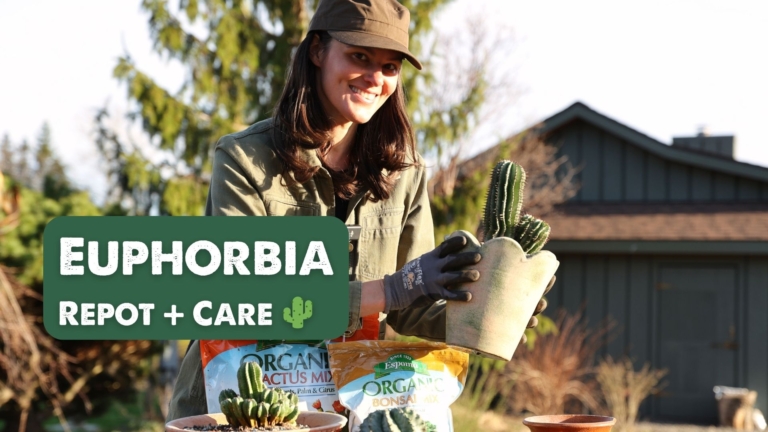
VIDEO: Planting Strawberry Raised Beds 🍓🌱 with Garden Answer
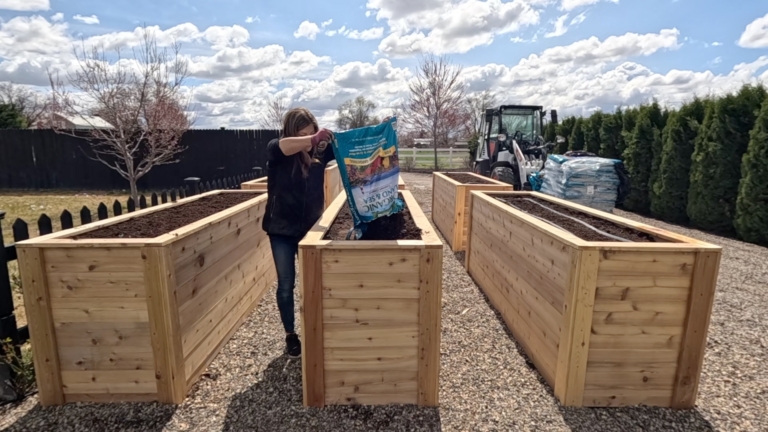
VIDEO: How to Plant a Raised Bed Like a Pro with Farmer Nick
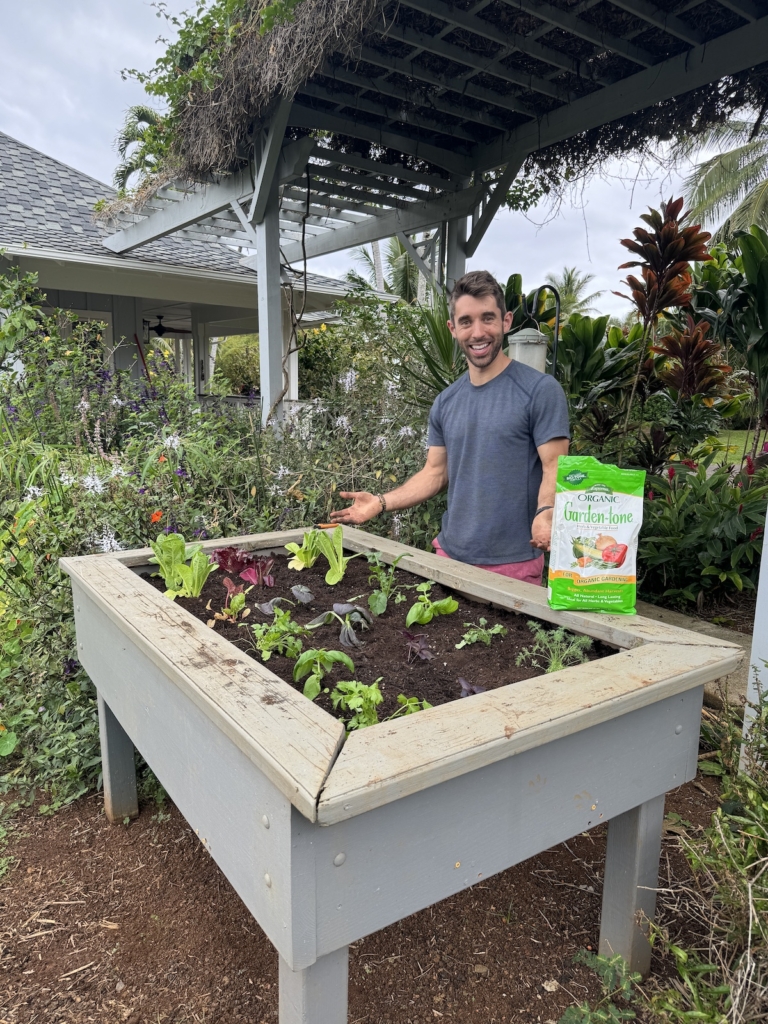
VIDEO: 6 Container Gardening MISTAKES | Growing Joy with Maria
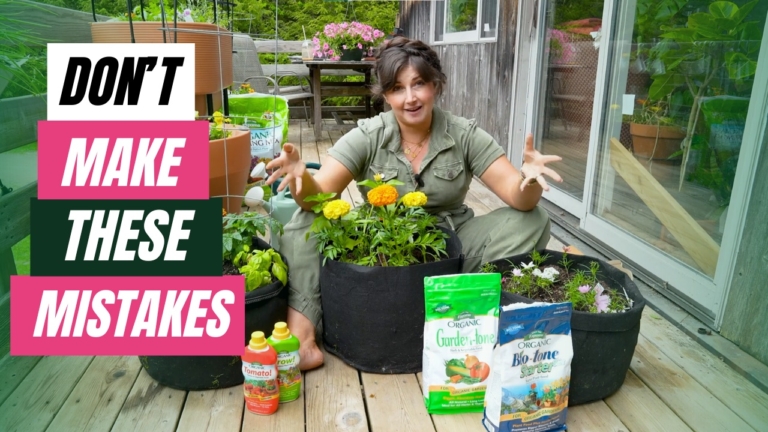
VIDEO: Repotting a Blood Orange Tree 🍊🌳 with Garden Answer
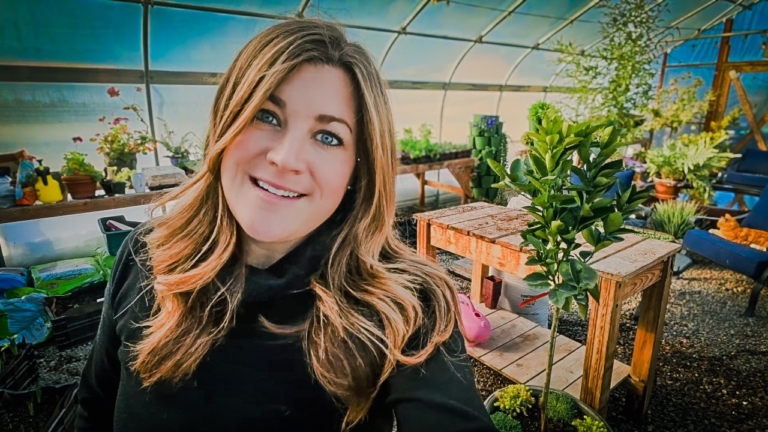
How to Repot Rosemary and Blue Ginger Using Organic Soils 🌿 | Summer Rayne Oakes
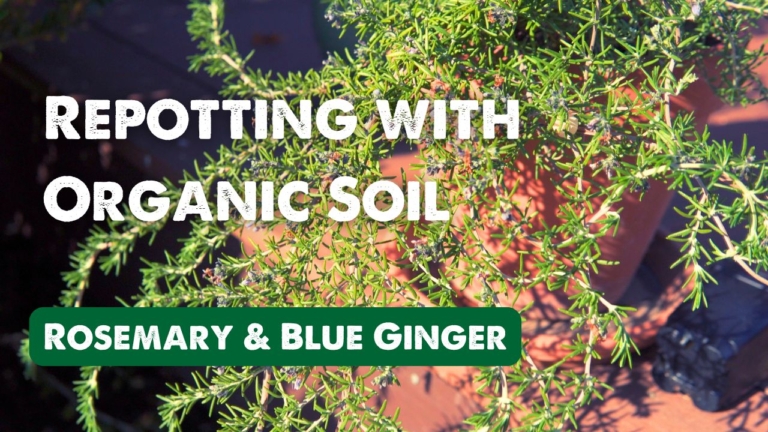
VIDEO: Starting Radishes & Onions from Seed 🌱 + Planting String of Watermelon Succulents 🍉 with Garden Answer
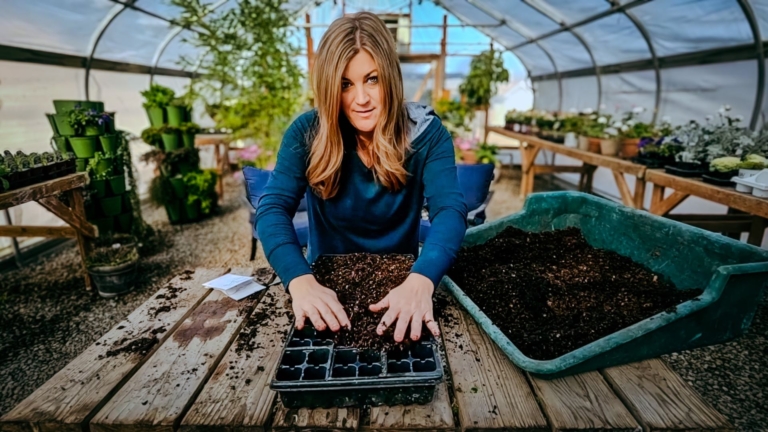
VIDEO: Prepare Your Plants for Winter Storage with Wyse Guide!

VIDEO: Houseplant Glow-Up: Repotting with Style 🪴✨ | Summer Rayne Oakes
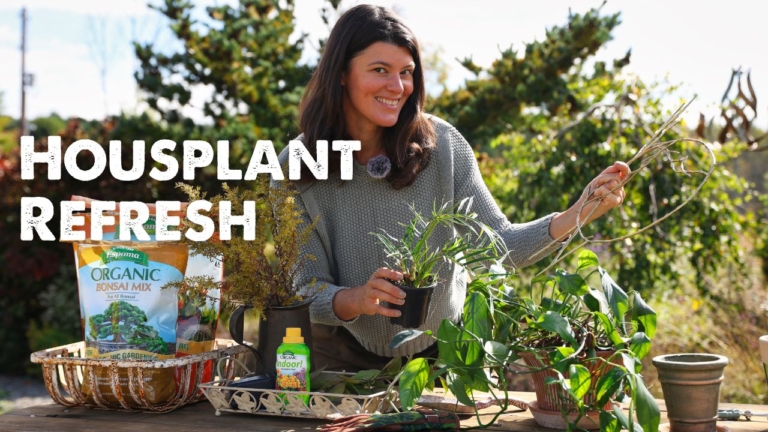
VIDEO: Planting Spring Tulips and Transplanting Boxwoods 🌿 with Wyse Guide


